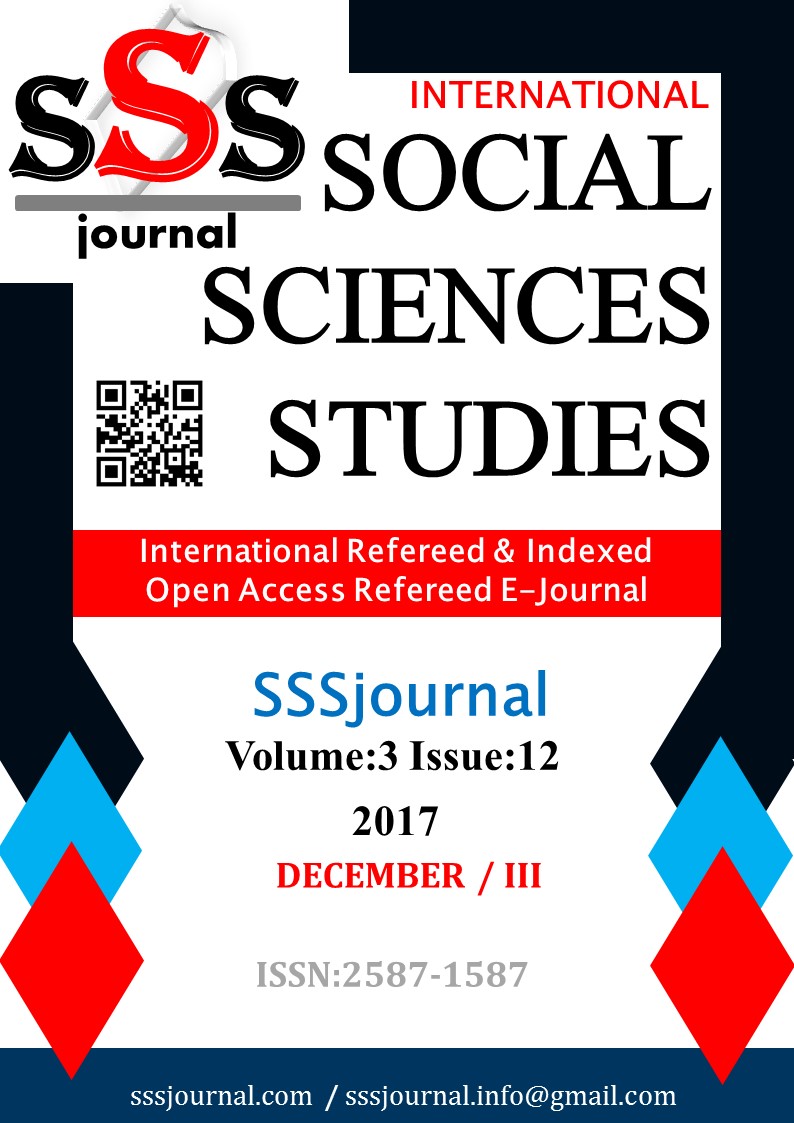Author :
Abstract
Para politikasının fonksiyonlarını yerine getirebilmesi ve makroekonomik değişkenleri etkilemesi açısından para talebinin istikrarı çok önemlidir. Bu çalışmada Türkiye’de para talebinin istikrarlılığı, 1986Q1-2016Q3 dönemi için para talebi ve temel belirleyicileri arasındaki uzun dönemli ilişki çerçevesinde test edilmiştir. Söz konusu zaman aralığında yaşanan ekonomik krizlerin, yapısal değişimlerin ve uygulanan politikaların para talebi üzerindeki etkilerini gözlemleyebilmek için Bierens ve Martins (2010) tarafından geliştirilen zamana göre değişen parametreli eş bütünleşme testi kullanılmıştır. Elde edilen bulgulara göre para talebi ve belirleyenleri arasında zamana göre değişen eş bütünleşme ilişkisi tespit edilmiştir. Zamana göre normalize edilmiş katsayı tahminleri ve CUSUM ve CUSUMSQ istikrar testlerine göre özellikle kriz dönemlerinde para talebinin istikrarsız olduğunu görülmektedir. Bununla birlikte, gelir esnekliği katsayısındaki dalgalanmalar faiz esnekliğine göre daha yüksektir. İstikrar testleri de 2006 yılı sonrası para talebinin istikrarsızlaştığını ve 1996, 2006 ve 2010 dönemlerinde parametrelerde istikrarsızlık meydana geldiğini göstermektedir. Ekonomik krizler ve yapısal değişimler geniş kapsamlı para arzının Merkez Bankası tarafından bir politika aracı olarak kullanılmasını kısıtladığı söylenebilir.
Keywords
Abstract
The stability of the money demand is very important in terms of its ability to fulfill the functions of the monetary policy and to influence the macroeconomic variables. In this study, the stability of the money demand in Turkey has been tested in the long-run relationship between money demand and the main determinants of money demand for the period 1986Q1-2016Q3. The time-varying parameter cointegration test developed by Bierens and Martins (2010) was used to observe the effects of the economic crises occured at the material time, structural changes and the applied policies on the money demand. According to the findings obtained, a time-varying cointegration relationship was detected between monetary demand and its determinants. From the time-normalized coefficient estimates and CUSUM and CUSUMSQ stability tests, it follows that money demand has been unstable especially in crisis periods. In addition to this, fluctuations in the income elasticity coefficient are higher than interest elasticity. The main reason for this instability is the fluctuations in income elasticity. Stability tests also show that monetary demand is destabilizing after 2006 and that instability has taken hold in parameters in the period of 1996, 2006 and 2010. It can be said that economic crises and structural changes restrict the use of broad money supply as a policy tool by the Central Bank.
Keywords
- Akıncı, Ö. (2003). “Modeling Demand for Currency Issued in Turkey” Central Bank Review, 1:1-25.
- Akıncı, Ö. (2003). “Modeling Demand for Currency Issued in Turkey” Central Bank Review, 1:1-25.
- Altıntaş, H. (2008). “Türkiye’de Para Talebinin İstikrarı Ve Sınır Testi Yaklaşımıyla Öngörülmesi: 1985- 2006”, Erciyes Üniversitesi İktisadi ve İdari Bilimler Fakültesi Dergisi, 30: 15-46.
- Andersen, P. S. (1985). “The Stability of Money Demand Functions: An Alternative Approach”, Bank for International Settlements, 14(4), 1-72.
- Atgür, M. & Altay O.N. (2015). “Enflasyon Hedeflemesi Sürecinde Para Talebi İstikrarının ARDL ModeliYaklaşımı İle Analizi: Türkiye ve Endonezya Örneği” Eskişehir Osmangazi Üniversitesi İİBF Dergisi, Nisan, 10(1), 79- 97.
- Balaylar, N.A. & Duygulu, A.A. (2004). “Türkiye’de Para İkamesi Olgusu ve Para Talebinin İstikrarı”, Dokuz Eylül Üniversitesi İktisadi ve İdari Bilimler Fakültesi Dergisi, 19(2): 33-54.
- Bierens, H. J. & Martins, L. F. (2010). “Time-Varying Cointegration”, Econometric Theory, 26, 1453–90.
- Brown, R.L., Durbin, J. ve Evans, J.M. (1975). “Techniques for Testing the Constancy of RegressionRelationships over Time”, Journal of the Royal Statistical Society, Series B (Methodological), 37(2):149-192.Civcir, İ. (2003). “Money Demand, Financial Liberalization and Currency Substitution in Turkey”, Journal of Economic Studies, 30(5):514-534.
- Çatık, A. N. (2007). “Yapısal Kırılma Altında Para Talebinin İstikrarı: Türkiye Örneği”, İktisat İşletme ve Finans, 22(251): 103-113.
- Doğru, B. (2014). “Türkiye’de Para Talebinin Uzun ve Kısa Dönem Dengesinin ARDL ve VEC Yaklaşımları ile Analiz Edilmesi”, Ekonomik ve Sosyal Araştırmalar Dergisi, Cilt 10, Yıl 10, Sayı 2.
- Dritsaki, M. & C. Dritsaki (2012). “The Stability of Money Demand: Evidence from Turkey”, The IUP Journal of Bank Management, 11(4), 1-22.
- Fisher, D. (1973). “The Speculative Demand for Money: An Empirical Test”, Economica, 40(158), 174-179.Gencer, S. & İ. Arısoy (2013). “Türkiye'de Uzun Dönem Geniş Para (M2Y) Talebinin Tahmini: Zamanla Değişen Katsayılar Yönteminden Bulgular”, Ege Akademik Bakış, 4(13), 515-526.
- Halıcıoğlu, F. & Uğur, M. (2005). “On Stability of the Demand for Money in a Developing OECD Country: The Case of Turkey”, Global Business and Economic Review, 7 (2/3): 203-213.
- Johansen, S. (1991). “Estimation and Hypothesis Testing of Cointegration Vectors in Gaussian Vector Autoregressive Models”, Econometrica, 59, 1551–80. doi:10.2307/2938278
- Koğar, Ç.İ. (1995). “Cointegration Test for Money Demand: The Case for Turkey and Israel” The Central Bank of the Republic of Turkey, Research Department Discussion Paper No:9514.
- Lee, J. & Strazicich, M. C. (2003). “Minimum Lagrange Multiplier Unit Root Test with Two Structural Breaks”, Review of Economics and Statistics, 85, 1082–9.
- Lütkepohl, H. (1993). The Sources of the US Money Demand Instability, Empirical Economics, 18(4), 729-Mutluer, D. & Barlas, Y. (2002). “Modeling the Turkish Broad Money Demand”, Central Bank Review, 2:55-Mishkin, F.S. & Serletis, A. (2011). The Economics of Money, Banking and Financial Markets, Fourth Canadian Edition, Pearson Education, Canada.
- Özcan, B. & Arı, A (2013). “Para Talebinin Belirleyenleri ve İstikrarı Üzerine Bir Uygulama: Türkiye Örneği”, Yönetim ve Ekonomi Dergisi, Cilt 20, Sayı: 2, 105-120.
- Park, J. Y. & Hahn, S. B. (1999). “Cointegrating Regressions with Time Varying Coefficients, Econometric Theory”, 15, 664–703.
- Saatçioğlu, C. & Korap, H.L. (2005) “The Turkish Broad Money Demand” İstanbul Ticaret Üniversitesi Sosyal Bilimler Dergisi, 7(1):139-165.
- Starleaf, D. R., & Reimer, R. (1967). The Keynesian Demand Function for Money: Some Statistical Tests. The Journal of Finance, 22(1), 71-76.
- Yılancı, V. (2012). “Türkiye’de Para Talebi İstikrarlılığının Testi: Kayan Pencerelerde Sınır Testi Yaklaşımı”, Dumlupınar Üniversitesi Sosyal Bilimler Dergisi, 33, 67-74
